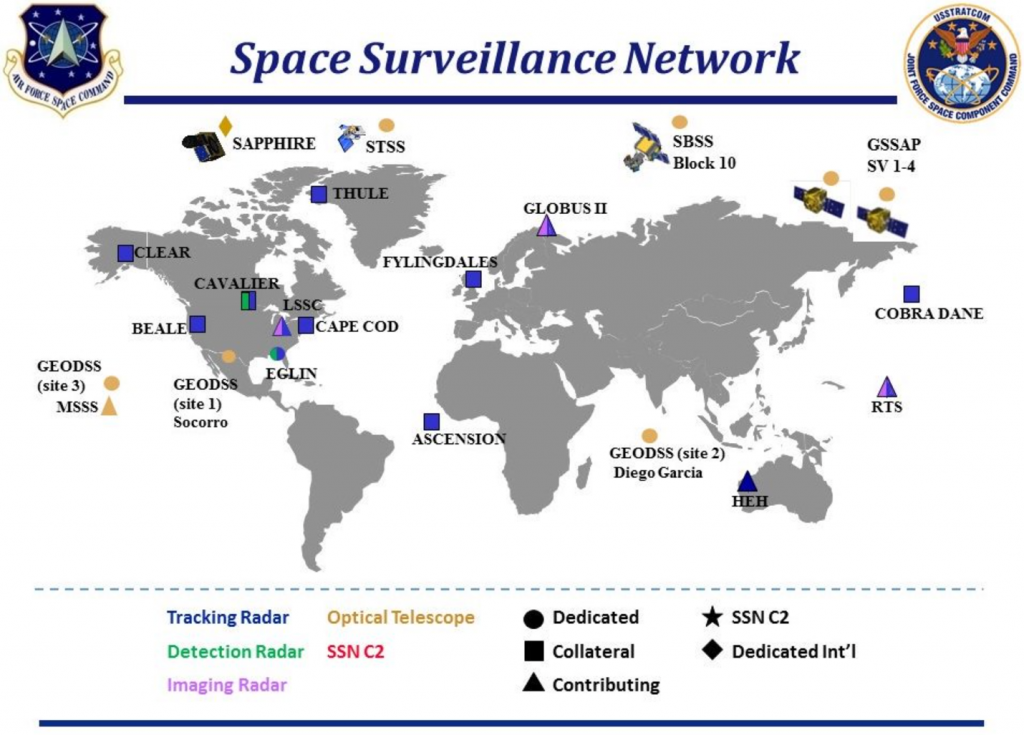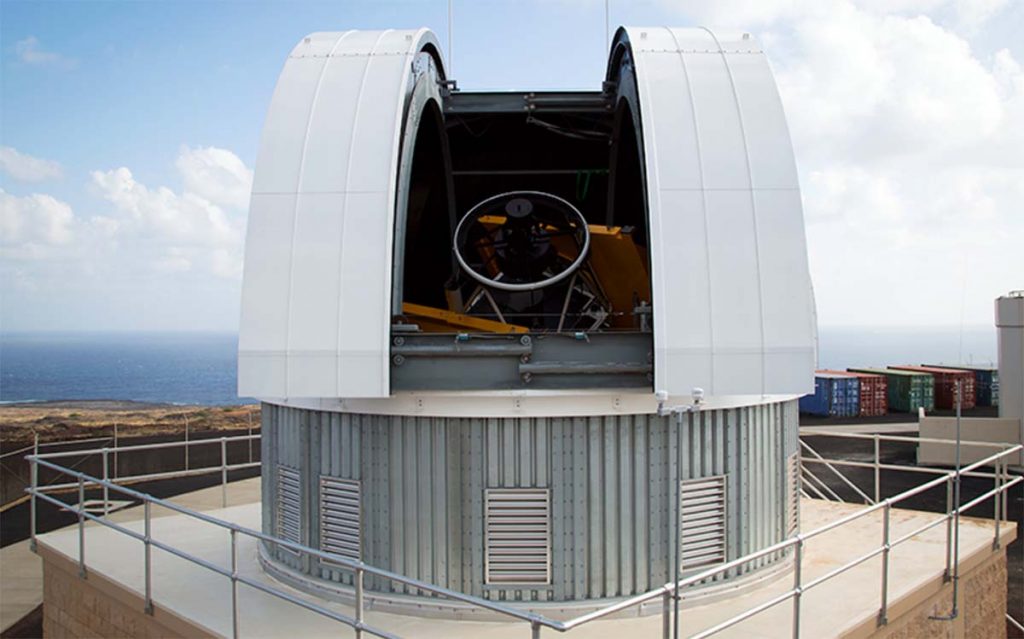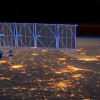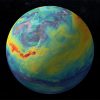Tracking space junk to preserve the future of spaceflight
More than 27,000 pieces of orbital debris bigger than a softball surround the planet in Low Earth Orbit. Finding and tracking those pieces of space junk could ensure the future of spaceflight.
On June 16th, 2022, the International Space Station had to make an emergency burn to avoid a piece of space debris that was projected to come within half a mile of its location. The four-and-a-half-minute burn raised the orbit of the ISS without disrupting operations. Nobody was hurt.
The debris headed toward the station was from an old Russian spy satellite called Cosmos 1408. The satellite was destroyed by the Russians in November 2021 as part of an anti-satellite test, creating at least 1,500 trackable fragments, causing an international incident, and posing a lot of questions about the future of objects in Low Earth Orbit.
As the great Douglas Adams wrote, space is big. Really big. You just won’t believe how vastly mind-bogglingly big it is. But the space right above our atmosphere is a finite resource. An object in Low Earth Orbit (LEO) is considered to have an orbital period of 128 minutes or less or have an altitude below 2,000 kilometers (1,200 miles) above the surface. Most satellites are in LEO, as is the International Space Station. No human has left LEO since the Apollo missions went to the moon in the 60s and early 70s.
Low Earth Orbit has become a very crowded place. And, as the destruction of Cosmos 1408 and the subsequent threats to the ISS have shown, space junk has become problematic. As of May 2021, the United States Department of Defense global Space Surveillance Network (SSN) tracked more than 27,000 pieces of orbital debris, according to NASA. Orbital debris includes, “nonfunctional spacecraft, abandoned launch vehicle stages, mission-related debris, and fragmentation debris.” NASA estimates that there are half a million pieces of debris about 1 centimeter or larger and more and 100 million pieces of debris the size of a millimeter or larger.
“An impact of even a tiny piece of orbital debris with a spacecraft could create big problems,” NASA wrote. “Even tiny paint flecks can damage a spacecraft when traveling at these velocities. A number of space shuttle windows were replaced because of damage caused by material that was analyzed and shown to be paint flecks. In fact, millimeter-sized orbital debris represents the highest mission-ending risk to most robotic spacecraft operating in Low Earth Orbit.”
Tracking space junk
The Space Surveillance Network is operated by the U.S. Air Force and uses a variety of sensors to track orbital debris the size of a softball (10 centimeters) or larger. The sensor network is spread across the globe and typically watches the sky from the ground, but also includes space-based satellites. The network sites include tracking, detection, and imaging radar, as well as optical telescopes.

According to NASA Orbital Debris Program Office, “Data is acquired using ground-based radars and optical telescopes, space-based sensors, analysis of spacecraft surfaces returned from space, and ground-based laboratory experiments, such as DebriSat.” Data comes from the U.S. SSN, but also the Haystack X-Band Radar and even the Hubble Space Telescope.
Optical measurements augment the global array of radar-based instruments. Ground-based telescopes that have tracked orbital debris include the Eugene Stansbery–Meter Class Autonomous Telescope (ES-MCAT) located on Ascension Island mid-way between Brazil and Africa, as well as NASA’s MODEST telescope located in Chile. NASA utilizes the Optical Measurement Center (OMC), an instrument that uses, “a broadband light source, rather than a laser, and a photometric detector to calculate a spacecraft material’s photometric response through BRDF measurements.”

Once data is collected from ground and space-based (in-situ) instruments, it is fed into NASA’s Orbital Debris Engineering Model (ORDEM) and Debris Assessment Software (DAS), a dataset and application that helps keep track of the current state of orbital debris in both Low Earth Orbit (LEO) and Geosynchronous Orbit.
The imaging challenges of tracking space junk
Orbital object tracking is a big category, including the monitoring and characterization of objects within Earth’s orbit, such as asteroids, space debris, or satellites. These objects are typically small, moving very fast, and poorly lit, a worst-case scenario for imaging.
Overcoming these challenges requires special sensors, with high frame rates, low noise, and high sensitivity, all packaged in hardware that can withstand the rigors of space. Accuracy over a large field of view is also crucial, allowing an imager to capture the object’s position and trajectory most accurately. Purpose-built unique cameras like the COSMOS take advantage of large CMOS sensor sizes (and up to 66 megapixel resolution) to allow low orbital objects to be captured over a longer period of time, resulting in minimal movement of the telescope tracking system. Less movement saves both energy and wear-and-tear on equipment that cannot be easily accessed.
Plans to fix the space junk problem
With the destruction of Cosmos 1408 and other collision incidents in LEO, companies and governments across the world are hatching ideas to clean up space. In addition, plans are being made to extend the lives of the nearly 5,000 operational satellites currently in orbit.
For instance, the U.S. Defense Advanced Research Projects Agency (DARPA) has funded research into using robots to navigate space and repair and refuel satellites. Called the Robotic Servicing of Geosynchronous Satellites (RSGS) project, the idea is to send robots with dexterous arms to inspect, repair, upgrade and help satellites relocate to more optimal positions. Another NASA project called On-orbit Servicing, Assembly, and Manufacturing 1 (OSAM-1) will launch later this decade and attempt to repair and upgrade an old U.S. Geological Survey satellite called Landstat 7 in LEO.

Steve Wozniak, the legendary co-founder of Apple, also wants to help solve the space junk problem through a new company called Privateer. The goal of the company is to do what NASA’s Orbital Debris Program Office does, but better, building a database that can keep track of orbital debris and alert governments and commercial companies of any potential hazards. Eventually, Privateer will launch its own small satellites to find and track the millions of pieces of debris under 10 centimeters in size.
“There’s a real need for us here on Earth who don’t work in the space industry to begin to understand how space debris impacts us every day,” Wozniak said to CNN Business. “Many of us don’t realize how much of our lives are reliant on services delivered from and through space — GPS services, financial transactions, climate monitoring. Our life on Earth is connected to space and even the smallest debris orbiting the Earth can damage and destroy these critical capabilities for some of the most basic aspects of our day-to-day life.”



 Keeping an eye on our galaxy: an overview of satellites
Keeping an eye on our galaxy: an overview of satellites  The TRUTHS Satellite Will Help Provide the Most Accurate Climate Data in History
The TRUTHS Satellite Will Help Provide the Most Accurate Climate Data in History 